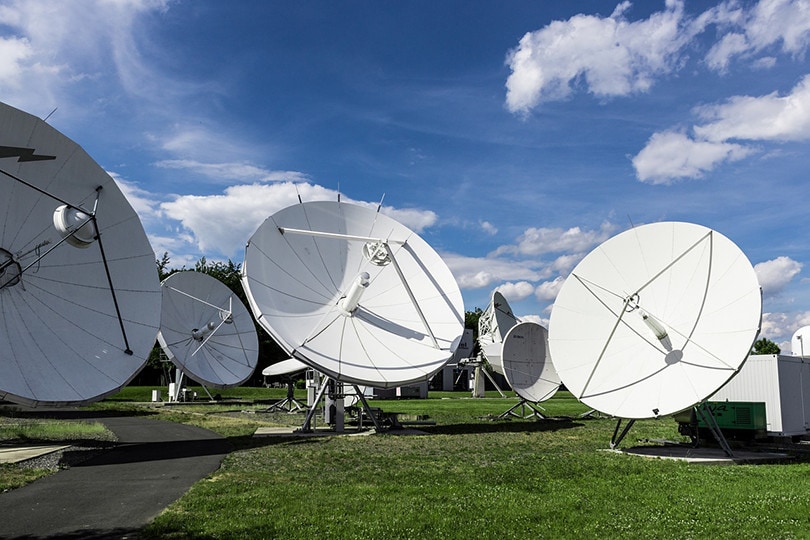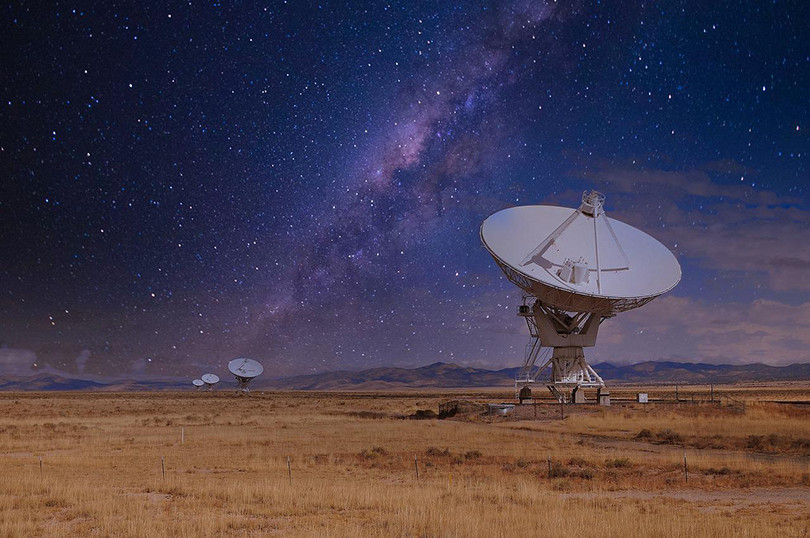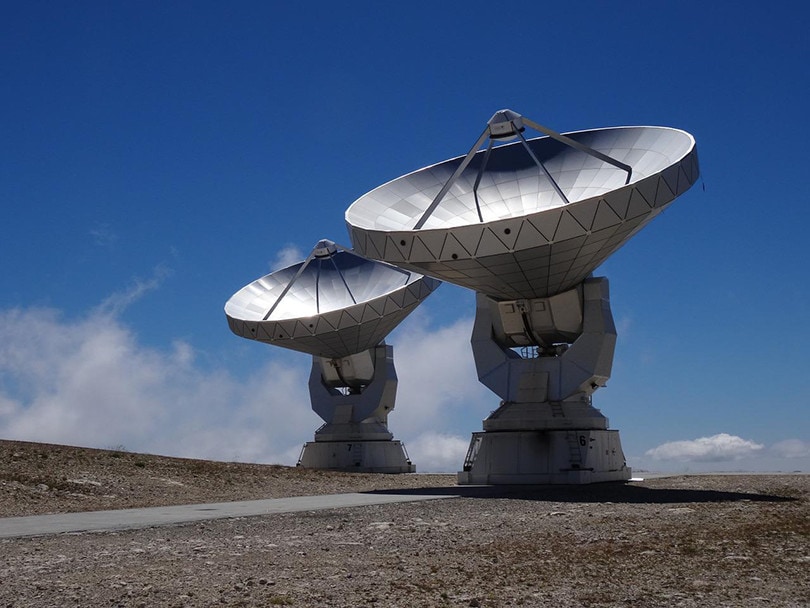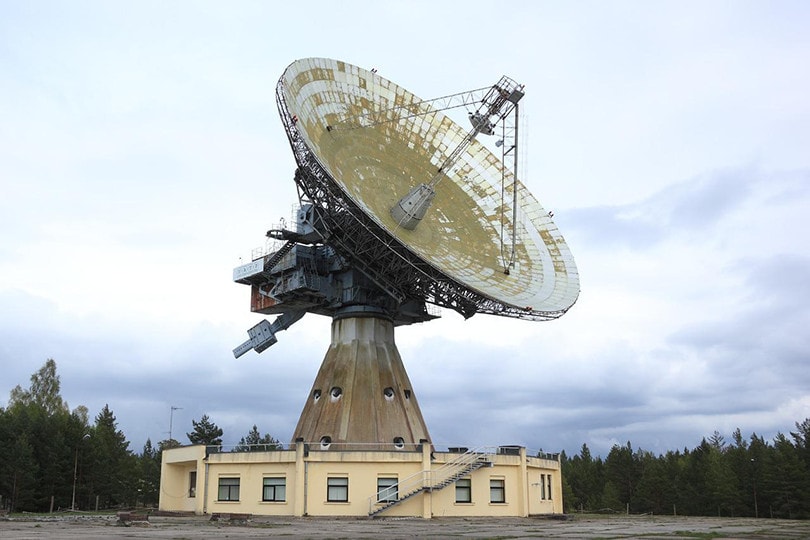6 Fun and Interesting Radio Telescope Facts
Last Updated on

Radio telescopes aren’t a groundbreaking new technology, but they’re still remarkable. Radio telescopes have been a part of groundbreaking discoveries for decades, and scientists are only discovering more cool things.
Here are six different radio telescope facts that you can use to amaze your friends!

The 6 Most Interesting Radio Telescope Facts
1. Radio telescopes imaged the first asteroid in 1989.
While people knew about asteroids long before 1989, we didn’t know what they looked like. It’s incredibly dark in space, so getting a shape or anything else from an asteroid can be a bit of a challenge with a traditional telescope.
Radio telescopes helped them overcome that challenge. Multiple photos imaged the 4769 Castalia asteroid in 1989 from the Arecibo Observatory. They’re a bit blurry, but they’re the first images of an asteroid!

2. Radio telescopes discovered exoplanets in 1992.
While spotting an asteroid is cool, spotting planets orbiting far-off stars is a bit cooler. Modern telescopes, like the Kepler, TESS, and soon, the James Webb, have made it a more common occurrence, but the first confirmed exoplanets were in 1992 and came from a radio telescope.
It was a humble beginning, but we started to get an inkling about what was out there with radio telescopes!
3. Due to radio telescopes, we think that there’s ice on Mercury.
Mercury sits twice as close to the Sun as Earth, and as such, its surface can reach scorching temperatures of 800 degrees Fahrenheit! But images from radio telescopes have highlighted reflective regions on the planet, and scientists theorize that those spots come from ice!
Scientists think that deep in the craters on Mercury’s surface are areas that constantly stay in the shade, thus keeping them cool enough to have ice. For a planet so close to the sun, that’s quite astonishing!

Related Read: How Far Away Is Mars? How Long Would it Take to Travel There?
4. The world’s largest radio telescope is gigantic.
Atacama Large Millimeter/submillimeter Array (ALMA) is the world’s largest radio telescope, and it consists of multiple smaller satellites. Sixty-six different high-precision dish antennas make up the entire array.
Fifty-four of these antennas stretch 177 feet across, while the other 12 antennas stretch 23 feet across. Those antennas all on their own would be impressive, and all of them working together is even more so.
5. Radio telescopes discovered the first pulsar in 1967.
When a massive star collapses, it explodes and forms a supernova. Until 1967, that’s all we really knew of the phenomenon. Then the radio telescope was developed.
We then learned that at the center of these supernovas is a super compressed object that consists almost entirely of neutrons. This core spins extremely fast, emitting a signal that often repeats.
We’re not quite sure what causes the signal, but we do know that it’s there. Today, we know of over 2,000 pulsars, all of which were discovered using radio telescopes!

6. It took 10 years to build ALMA.
While it took 10 years to build ALMA, that might actually be shortchanging things a bit. That’s just how long it took for the physical construction, which started in November 2003 and finished in March 2013.
However, testing started all the way back in 1995, so ALMA was quite a few years in the making before anyone broke ground in Chile!
•You might also like:9 Interesting Facts About the Asteroid Belt You Never Knew

Conclusion
When you look at everything that radio telescopes been a part of over the years, it’s hard to deny that they are super cool.
They’ve been critical in confirming theories decades before other methods could, and today, they’re still the only tools that we have for trying to decipher what’s going on with pulsars. So, don’t discount radio telescopes just because you can’t look through them; they are still providing tons of useful scientific information for all of us!
Sources
Featured Image Credit: TheoLeo, Pixabay
Table of Contents
- The 6 Most Interesting Radio Telescope Facts
- 1. Radio telescopes imaged the first asteroid in 1989.
- 2. Radio telescopes discovered exoplanets in 1992.
- 3. Due to radio telescopes, we think that there’s ice on Mercury.
- 4. The world’s largest radio telescope is gigantic.
- 5. Radio telescopes discovered the first pulsar in 1967.
- 6. It took 10 years to build ALMA.
- Conclusion
About the Author Robert Sparks
Robert’s obsession with all things optical started early in life, when his optician father would bring home prototypes for Robert to play with. Nowadays, Robert is dedicated to helping others find the right optics for their needs. His hobbies include astronomy, astrophysics, and model building. Originally from Newark, NJ, he resides in Santa Fe, New Mexico, where the nighttime skies are filled with glittering stars.
Related Articles:
15 Crucial Facts About Ultraviolet Rays & the Sun
What Constellation Is Spica In? The Interesting Answer!
10 Interesting Leo Constellation Facts, Myths, and FAQs
15 Interesting Pegasus Constellation Facts, Myths, and FAQs
6 Interesting Sagittarius Constellation Facts, Myths, and FAQs in 2024!
What Are Constellations? Where Did They Come From?
8 Interesting Libra Constellation Facts, Myths, and FAQs
What Is Infrared Radiation? Science-Based Facts & FAQ
